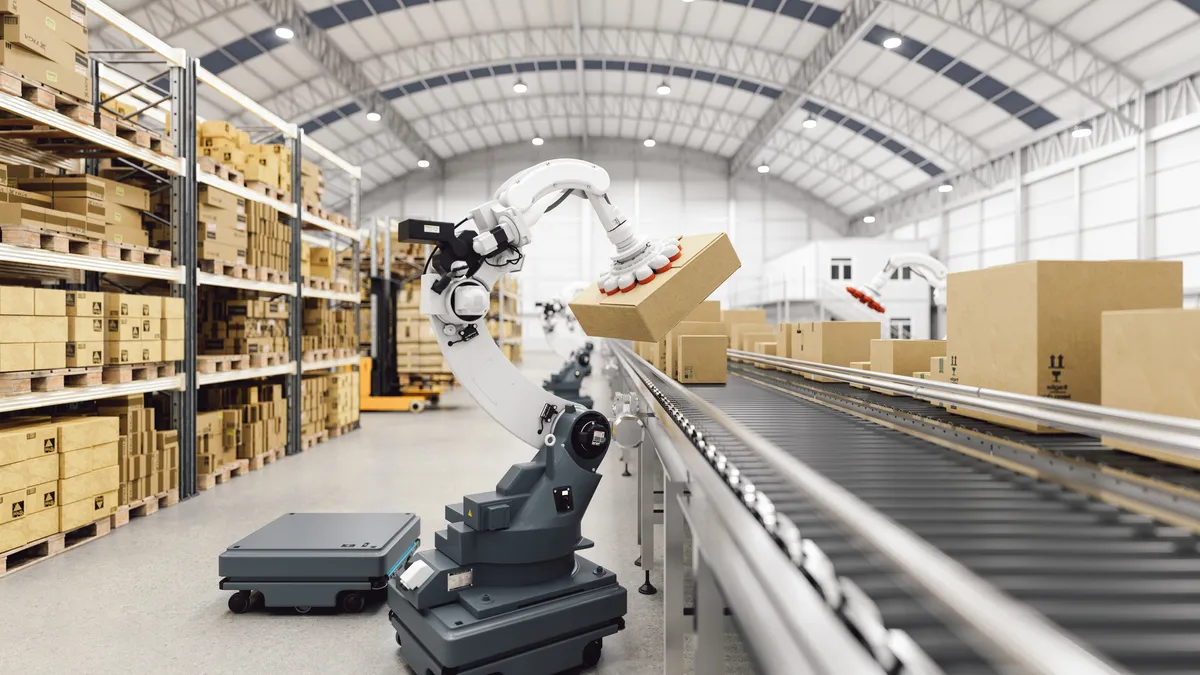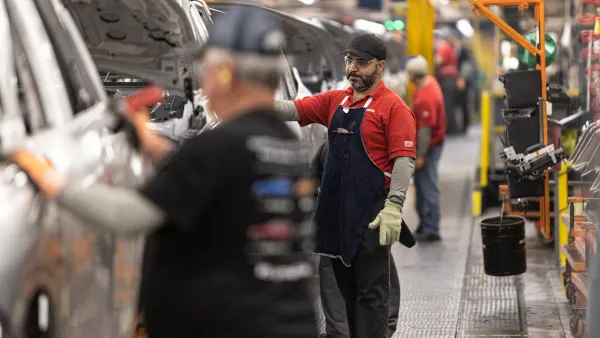Executives confronting the worst flare-up in prices in more than 30 years have so far found ways to beat the heat.
As of Friday, 76% of Standard & Poor’s 500 companies exceeded earnings-per-share estimates for the fourth quarter of 2021 — a proportion equal to the five-year average, according to FactSet.
Still, many companies face a risk of getting burned by inflation during at least the first half of 2022, CFOs said during recent earnings calls with analysts. They are trying to sustain profits by raising prices, cutting costs, increasing productivity and hedging against future price gains.
"Inflationary pressures are broad-based, with little sign of near-term relief," Procter & Gamble CFO Andre Schulten told analysts during the company’s quarterly earnings call on Jan. 19.
"Transportation and labor markets remain tight; availability of materials remain stretched in some categories and some markets," Schulten said, warning that the company faces an estimated "$2.3 billion after-tax, commodity-cost headwind in fiscal 2022."
The producer price index, a measure of what suppliers charge businesses, surged 9.7% last year. Meanwhile, consumers’ purchasing power fell as a 7% jump in the consumer price index outpaced the 4.9% gain in average hourly earnings.
Spiraling costs have created "as tough an operating environment as we have seen in decades," General Electric CEO Lawrence Culp said during a fourth-quarter earnings call on Jan. 25.
Increases in commodity prices have accelerated in just the past 90 to 120 days, ConocoPhillips CEO Ryan Lance said during a Feb. 4 earnings call. The rising cost of chemicals, tubular steel, trucking and labor is especially striking, he said.
"Inflation has gone downstream now, so you’re seeing it in many more places than you had seen it before," Monish Patolawala, chief financial and transformation officer at 3M, said during a Jan. 26 earnings call. Higher materials and logistics costs dented 3M’s operating profit margin by 80 basis points last year.
Johnson & Johnson faced rising costs for transportation, labor and some commodities, CFO Joseph Wolk said on Jan. 25, singling out lubricants and other inputs for consumer health products.
Wage inflation also bedeviled several companies, including Amazon.
"We did see more than $4 billion in costs from inflationary pressures and lost productivity and disruptions in our operations," Amazon CFO Brian Olsavsky said on a Feb. 3 earnings call. "The inflation primarily relates to wage increases and incentives in our operations, as well as higher pricing from third-party carriers supporting our fulfillment centers."
Inflation and costs stemming from the omicron variant of COVID-19 and tight labor markets persisted into this year, Amazon CEO Andy Jassy said in a statement.
Companies are trying to reduce the heat from inflation with four strategies.
1. Raising prices
Amazon plans to raise the annual fee for Prime membership by 17% — to $139 from $119, Olsavsky said. It's the first increase since 2018.
Wolk anticipates increasing prices among many of Johnson & Johnson’s consumer health products this year, while Culp said GE is "making sure that we are pushing price where we can."
Last year "price/cost was ever-so-slight negative for us, and I think as we look at the outlook for 2022, the same holds," Culp said.
Procter & Gamble announced price increases in all 10 product categories in the U.S. — from hair care to home care and baby care to adult incontinence, Schulten said. It also informed retailers of higher prices beginning Feb. 28 for Tide, Gain, Bounce and other laundry products.
"We expect price to be a larger contributor to sales growth in the back half of the fiscal year [ending June 30] as more of our price increases become effective in the market," he said.
Trane Technologies raised prices three times across most of its products last year, "capping full-year positive price/cost," CFO Chris Kuehn said on a Jan. 31 earnings call.
"We got ahead of the marketing competition in terms of the timing of our price announcements," Kuehn said.
However, the price/cost balance may turn negative for Trane during the first half of 2022, he said. "We’re going to remain nimble as we go through the year" monitoring inflation.
3M during the fourth quarter charged prices 260 basis points higher than during the same period in 2020, Patolawala said.
"Higher year-on-year selling prices offset raw material and logistics cost inflation in Q4, which resulted in an increase in earnings of three cents," Patolawala said. "Pricing will continue to remain a tailwind for 2022."
2. Boosting productivity
Procter & Gamble this year is looking for savings through higher productivity, Schulten said.
Raytheon Technologies plans to "find efficiencies in the factories so that we can get productivity to offset the continued pressure on wages," CEO Greg Hayes said on a Jan. 25 call. The company anticipates about $150 million in price pressure this year from unexpected inflation in its supply chain.
Otis Worldwide counterbalanced most of the $35 million in commodity inflation during the fourth quarter by streamlining installation of its products, CFO Rahul Ghai said on a Jan. 31 call.
Otis plans to offset "commodity headwinds of $90 million" through productivity improvements, Ghai said, noting tailwinds from a combination of price increases and higher demand.
3. Cutting costs
Exxon Mobil plans to reduce costs by $2 billion both this year and in 2023, CEO Darren Woods said during a Feb. 1 earnings call. When negotiating contracts last year, the company tried to curb cost increases, he said. "That’s paying off."
GE "retooled" its procurement team in an effort to contain costs, Culp said. "We are just trying to make sure that we are working with our suppliers as smartly as we can to get the best combination of quality, delivery and cost possible."
4. Hedging
Trane hedges copper and aluminum to smooth out prices over a 12-month period, Kuehn said. "Going into any one quarter, we’d have about 70% to 75% of that price already hedged."
Trane similarly buffers against increases in steel prices, he said.
"We have a six-month lag on our steel purchasing from when we lock in prices to when we would see any price changes," he said. "So any dynamics now in January we’re seeing in steel would really be realized in the second half of the year."
Looking ahead
Trane expects inflation to persist during the first quarter at roughly the same intensity as last quarter but ease during the second half of 2022, Kuehn said.
"Our best view is we’re probably price/cost negative in the first half [of 2022], and then it returns to really very good strength in the second half of the year and strong leverage," he said.
3M forecasts a similar path for inflation.
"I think the first half is going to be tougher than the second half of 2022 when it comes to inflation," Patolawala said, noting the impact on future prices from labor availability, port congestion and air freight capacity.
The inflation outlook shared by many CFOs aligns with that of Federal Reserve Chair Jerome Powell, who has predicted that supply chain bottlenecks will unclog and price gains slow by the summer.
Powell and his central bank colleagues aim to tamp down inflation. In December they signaled plans to trim record monetary stimulus by raising the benchmark interest rate three times this year, with the first increase coming as soon as their next two-day meeting ending March 16.
Procter & Gamble predicts the feverish spike in prices is short-lived, Schulten said. "We believe this is a temporary bottom-line rough patch to grow through, not a reason to reduce investment in the business."
Consumers aiming to weather inflation despite their weaker purchasing power can stay with Procter & Gamble by buying the same category of product at a lower price, he said.
Take diapers, for example. "When you think about diapers, you can get a Luvs diaper for 15 cents a diaper, Swaddlers at 30 cents or Pure diaper at 38 cents," Schulten said. "That's generally true across all categories, across all brands — so that means the consumer has a choice within our portfolio."























